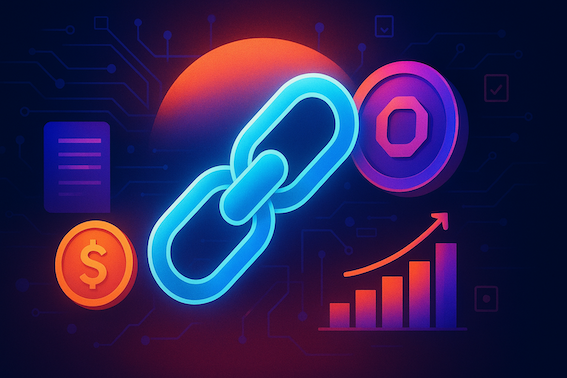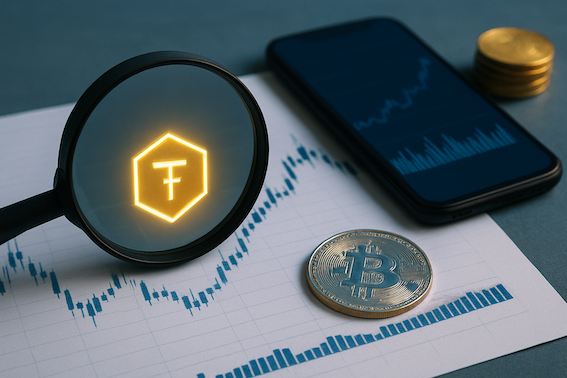From Illiquidity to Instant Liquidity: How Tokenization Is Reshaping U.S. Treasuries and Private Credit
1. Introduction: The Liquidity Challenge in Debt Markets
Even though they have a foundational position within the global financial system, traditional debt markets such as U.S. Treasuries and private credit remain plagued by inefficiencies constraining liquidity and access. These are most pronounced for smaller institutions and individual investors, who historically face significant barriers in entering or exiting such markets.
Settlement latency is one of the major concerns. The majority of traditional debt securities operate on T+2 or longer settlement periods, i.e., at least two days pass before trades settle and clear. This delay brings operational risk, ties up capital, and restricts real-time rebalancing of the portfolio, an acute disadvantage when markets are very volatile.
And then there is the issue of very high barriers to entry. Direct access to instruments like U.S. Treasuries or private credit funds typically carry substantial minimums, precluding entry by smaller institutions or investors with tighter liquidity. Even when indirect access is offered in the guise of ETFs or mutual funds, such funds add layers of fees and latency, reducing efficiency further.
Finally, fragmented custodianship and complex intermediated infrastructure make real-time tracking, transferability, and ownership verification difficult. Transfer agents, custodians, clearinghouses, and others introduce friction that not only slows down transactions but also increases cost and opacity during the debt lifecycle.
The result? A marketplace that, while massive in scale, is all too often slow, siloed, and elite, ripe for disruption through blockchain-enabled tokenization.
2. The Rise of Tokenized Debt Instruments
Tokenization is transforming the issuance, custody, and trading of government and private debt securities, giving rise to an age of programmable, liquid, and accessible financial assets.
At its core, tokenization refers to the process of converting rights to a real-world asset, like a U.S. Treasury bill or a private credit agreement, into a digital token on a blockchain. This token represents fractional ownership and can be traded with the speed, transparency, and security of modern decentralized infrastructure.
The trend is no longer theoretical. Big banks and financial institutions have already begun tokenizing debt instruments:
- Franklin Templeton launched its tokenized money market fund on public blockchains, giving investors direct exposure to U.S. Treasuries and transparent real-time record keeping with faster settlement.
- Ondo Finance introduced tokenized funds of U.S. Treasuries and bonds, making them accessible to investors globally and providing on-chain composability with other DeFi protocols.
- Maple Finance is pioneering tokenized private credit, enabling lending to institutions through blockchain-native credit pools with inherent transparency and timely performance reporting.
These trailblazers are already demonstrating the possibility: settlement in seconds, 24/7 market access, fractional ownership, and universal investor access, outcomes that are essentially impossible in traditional debt markets.
Furthermore, tokenization removes most of the structural barriers to entry in debt investing that have historically existed. With reduced investment minimums and simpler transfer of ownership, tokenized debt markets provide access to yield-bearing instruments formerly the exclusive domain of large institutions.
As blockchain technology becomes more mature and regulatory certainty improves, the platform for tokenized debt is expanding rapidly, with projections of trillions of dollars in tokenized credit assets, notes, and bonds over the next ten years. But in order for this future to be scalable and compliant, robust tokenization protocols must not just handle asset issuance but also investor onboarding, rule enforcement, and lifecycle management.
That’s where platforms such as Zoniqx come in, offering purpose-built infrastructure to bring institutional-grade debt assets into the tokenized era.
3. Benefits of Tokenization: From T+2 to Real-Time Market Efficiency
Tokenization is not merely a digital upgrade to traditional debt instruments, it represents a foundational shift in how debt is issued, transferred, and managed. By leveraging blockchain technology, tokenized U.S. Treasuries and private credit products introduce a range of efficiencies and capabilities that are not possible within legacy systems.
Accelerated Settlement and Reduced Counterparty Risk
Traditional debt markets operate on T+2 (or longer) settlement cycles, which tie up capital and introduce counterparty risk throughout the trade lifecycle. Tokenization enables near-instant settlement, significantly improving capital efficiency and reducing systemic exposure. This is especially relevant for institutional investors managing high-volume portfolios or time-sensitive transactions.
Greater Accessibility Through Fractionalization
Historically, investment in government and private debt instruments has been limited to large institutions or accredited investors due to high entry thresholds and opaque structures. Tokenization facilitates fractional ownership, allowing smaller institutions, family offices, and qualified retail investors to participate in markets previously out of reach. This expands the investor base without compromising on compliance or governance standards.
Improved Liquidity and Secondary Market Potential
Private credit, in particular, has long been constrained by limited liquidity and inflexible exit options. Tokenized formats enable the creation of regulated secondary markets, where debt instruments can be traded peer-to-peer or via digital asset exchanges. This improves price discovery, enhances portfolio agility, and can reduce the cost of capital for issuers.
Automation of Operational and Compliance Functions
Smart contracts embedded within tokenized debt instruments can automate core lifecycle events such as interest payments, maturity redemptions, and investor eligibility checks. This not only reduces operational overhead but also minimizes the potential for human error. Moreover, compliance mechanisms such as transfer restrictions, KYC/AML enforcement, and jurisdictional controls can be programmatically enforced at the token level, enabling real-time regulatory alignment.
Transparency and Auditability
All token transactions are recorded immutably on the blockchain, providing continuous, auditable records of ownership, transfers, and servicing activity. This level of transparency improves trust across stakeholders, issuers, investors, auditors, and regulators, and simplifies reporting requirements.
These benefits illustrate why tokenization is increasingly viewed as a long-term infrastructure solution for the debt markets. However, to realize these advantages at scale, institutions require purpose-built tools that address regulatory complexity, investor identity, and full asset lifecycle management. Zoniqx’s DyCIST protocol and TALM process have been developed precisely for this purpose, bridging the gap between innovation and institutional-grade implementation.
4. Navigating Compliance and Structure: Zoniqx’s DyCIST and TALM Protocols
While the potential for tokenized U.S. Treasuries and private credit is vast, institutional adoption relies on meeting strict regulatory, operational, and technical requirements. Tokenization at scale needs more than blockchain technology, it demands compliance-native architecture that delivers trust, enforceability, and interoperability from issuance to secondary trading. Zoniqx achieves this with two core technologies: DyCIST and TALM.
DyCIST: Dynamic Compliant Interoperable Security Token
The DyCIST protocol is Zoniqx's compliance and identity orchestration layer that accommodates the unique regulatory requirements of tokenized real-world assets (RWAs) like debt instruments.
Some of the major features include:
- Dynamic Compliance: Automatically applies and enforces jurisdictional regulations, investor qualification, and transfer caps at the token level. Allows only qualified investors to buy, own, or transfer specific assets, with rules being adapted in real time based on changing regulations.
- Identity Verification and KYC/AML Integration: Compliant identity verification and secure onboarding are built into the process of the transaction, enabling compliant and seamless access to tokenized debt for qualified and institutional investors.
- Cross-Chain Operability: Compliant transfer and issuance of assets across many different blockchain networks is enabled by DyCIST, supporting institutions operating in multi-chain environments.
- Settlement Infrastructure: Supports atomic, on-chain settlement, reducing clearing time dramatically with institutional-grade security and auditability.
DyCIST provides the regulatory framework necessary for tokenized debt markets to function with the same rigor and conviction as traditional capital markets, yet with significantly improved operational efficiency.
TALM: Tokenization and Lifecycle Management
While DyCIST governs compliance and identity, TALM (Tokenized Asset Lifecycle Management) governs the complete operational lifecycle of tokenized assets, from issuance to redemption.
TALM supports:
- Token Creation and Distribution: Institutions can tokenize debt instruments with embedded rules for payment schedules, maturity dates, and transfer permissions.
- Automated Lifecycle Events: TALM manages ongoing operations such as interest distribution, corporate actions, and maturity-based redemptions through smart contract automation.
- Real-Time Asset Monitoring: Provides issuers and investors with real-time views of asset performance, cap tables, and transaction histories via an integrated dashboard.
- Interoperable Infrastructure: TALM is designed to integrate with custodians, fund administrators, and trading platforms, ensuring a seamless experience across traditional and digital workflows.
Together, DyCIST and TALM form a comprehensive framework that aligns with the operational and compliance expectations of regulated institutions, while unlocking the speed, accessibility, and programmability of blockchain technology.
Zoniqx’s infrastructure is built not only to support innovation but to de-risk adoption for institutions navigating the complexities of tokenized finance. With DyCIST and TALM, asset managers, lenders, and marketplaces can confidently tokenize and manage debt instruments with full compliance and operational integrity.
5. Use Case: Tokenized Treasuries and Private Credit on Zoniqx Infrastructure
To understand the practical application of tokenized debt, consider how an asset manager or lending platform can leverage Zoniqx’s DyCIST and TALM protocols to bring U.S. Treasuries and private credit instruments on-chain in a compliant, scalable, and efficient manner.
Scenario: A Private Credit Fund Enters the Tokenized Market
A mid-sized private credit fund, managing a portfolio of secured business loans, aims to expand its investor base and enhance liquidity without compromising regulatory compliance. Traditionally, the fund’s offerings are limited to long lock-in periods and manual interest disbursement, with minimal secondary market opportunities.
Using Zoniqx infrastructure, the fund undertakes the following steps:
- Tokenization of Underlying Assets
Through TALM, the fund tokenizes its loan agreements into digital securities, embedding parameters such as coupon rates, repayment schedules, and maturity dates. Each token represents fractional ownership in the underlying credit exposure. - Compliance Enforcement via DyCIST
DyCIST ensures that only verified, jurisdictionally eligible investors can participate. KYC/AML checks, investor accreditation status, and transfer restrictions are encoded at the token level and enforced in real time, eliminating the need for manual oversight. - Investor Onboarding and Access
Qualified investors onboard via a whitelisting process integrated into DyCIST. Through a user-friendly portal, they can view available offerings, subscribe to tokens, and manage their holdings with full transparency. - Automated Servicing and Reporting
TALM automates interest payments, monitors repayment progress, and updates token metadata as the underlying loans evolve. This ensures investors receive timely returns and accurate reporting without intermediary delays. - Secondary Market Integration
The fund opts to list these tokenized credit products on a regulated digital asset marketplace that integrates with DyCIST. This facilitates compliant peer-to-peer trading, offering investors flexibility to exit positions, a rarity in traditional private credit.
Parallel Application: Tokenized U.S. Treasuries
Similarly, an asset issuer looking to provide on-chain access to short-duration U.S. Treasury bills can use the same Zoniqx framework. With DyCIST ensuring global regulatory compliance and TALM handling lifecycle automation, the issuer enables secure, borderless distribution of tokenized Treasuries to institutions and platforms seeking stable, liquid yield instruments.
By abstracting away the complexities of compliance and infrastructure, Zoniqx empowers issuers to focus on asset quality and distribution, while ensuring that tokenized debt instruments are fully governed, transparent, and investor-ready from day one. Whether applied to public-sector securities or private lending portfolios, Zoniqx protocols offer a blueprint for debt market modernization.
6. Looking Ahead: Institutional Momentum and Regulatory Alignment
As capital markets evolve, tokenization of debt instruments, U.S. Treasuries and private credit leading the pack, is no longer viewed as a niche experiment, but as a strategic path to upgrade financial infrastructure. Institutional investment in tokenized fixed-income instruments is picking up steam, driven by the convergence of technological readiness, regulatory engagement, and increased pressure for more dynamic and transparent market infrastructures.
Institutional Demand is Real and Growing
Large asset managers, banks, and fintech platforms are currently actively exploring or issuing tokenized debt. BlackRock, JPMorgan, and Franklin Templeton are some of the companies that have already begun merging digital asset strategies into their operations with a perspective to increasing settlement speed, operational efficiency, and investor access.
Concurrently, blockchain-native ecosystems are building on-chain structured credit, Treasury, and money market products to address the needs of international investors seeking yield, diversification, and on-demand liquidity. These early deployments are laying the groundwork for broader market adoption, and they underscore the need for compliant, scalable tokenization infrastructure.
Regulatory Clarity is Taking Shape
Regulators in the key U.S., European, UAE, and Singapore jurisdictions are more actively engaging with tokenized financial assets through pilot projects, digital asset guidelines, and innovation sandboxes.
In the United States, activity by the SEC and FINRA are signs that there is a greater acceptance of the role that blockchain plays in securities markets, particularly in the realm of transfer agent registration and custodian.
The MiCA regulation and DLT Pilot Regime of the European Union provide a clear environment for issuing and trading tokenized securities within regulated contexts.
In Singapore and the UAE, regulators are themselves encouraging financial institutions to test tokenization use cases in a controlled environment, pushing forward the pace of adoption and development.
Zoniqx's architecture with a compliance-first mindset aligns with these advancements. With jurisdiction-specific rules integrated and full auditability as well as identity management, DyCIST and TALM offer a confidence channel for institutions to participate in tokenized debt markets without compromising regulatory obligations.
Interoperability Will Be the Next Frontier
As adoption scales, interoperability across chains, custodians, and regulatory regimes will be essential. Institutions will demand infrastructure that supports multi-asset, multi-jurisdiction issuance and seamless integration with both traditional financial systems and emerging blockchain platforms.
Zoniqx is building with this future in mind, designing tools that enable modular deployment, secure cross-chain operability, and compatibility with institutional workflows. This positions Zoniqx not only as a technology provider, but as a strategic enabler of tokenized capital markets at scale.
The direction is clear: institutional-grade tokenized debt markets are no longer speculative, they are inevitable. The next wave of adoption will depend on robust infrastructure that bridges technological innovation with regulatory discipline. With DyCIST and TALM, Zoniqx stands ready to lead that transformation.
7. Conclusion: A More Liquid, Inclusive Debt Market Is Here
The transformation of debt markets through tokenization marks a defining moment in the evolution of global finance. What was once constrained by high entry barriers, prolonged settlement cycles, and limited liquidity is now being reimagined as a more accessible, efficient, and transparent ecosystem.
U.S. Treasuries and private credit, cornerstones of institutional portfolios, are no longer bound to traditional market structures. Through blockchain-based tokenization, these instruments can be fractionalized, automated, and distributed across jurisdictions in a way that enhances performance while meeting the highest standards of compliance and control.
But unlocking this potential at scale requires more than infrastructure, it demands institutional-grade frameworks that address the full spectrum of regulatory, operational, and technical complexity. Zoniqx’s DyCIST and TALM protocols are built for this challenge, enabling real-world assets like government and private debt to transition into digital form with confidence and control.
As the market moves toward real-time finance, programmable compliance, and global liquidity, Zoniqx provides the tools and vision to bridge today’s debt instruments with tomorrow’s digital capital markets.
About Zoniqx
Institutional-Grade, Secure, and Future-Ready AI-Powered Multi-Chain Technology for Real-World Asset Tokenization
Zoniqx ("Zoh-nicks") is a global fintech leader headquartered in Silicon Valley, specializing in converting real-world assets into Security Tokens. Zoniqx leverages cutting-edge AI-driven multi-chain technology to enable seamless, secure, and regulatory-compliant RWA tokenization. Their platform integrates advanced compliance frameworks, supporting multiple regulatory structures and diverse asset classes.
With AI-powered automation, Zoniqx facilitates global liquidity and seamless DeFi² integration, enhancing accessibility and efficiency. Their interoperable architecture ensures smooth integration across multiple blockchains, while their robust suite of SDKs and APIs empowers developers with powerful tools for innovation. Zoniqx pioneers on-chain, fully automated RWA deployment on public, private, and hybrid chains.
To explore how Zoniqx can assist your organization in unlocking the potential of tokenized assets or to discuss potential partnerships and collaborations, please visit our contact page.
Disclaimer: Subject to and in compliance with applicable jurisdictional regulations. Refer to this link for details: https://law.uc.edu/education/library/security-lawyer-s-deskbook.html



